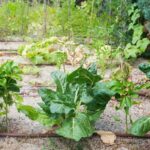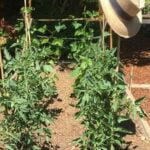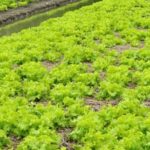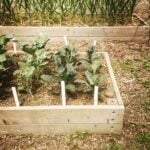Are you ready to embark on a vegetable gardening adventure in the heart of Texas? Whether you’re a seasoned gardener or just getting started, this comprehensive guide will help you navigate the unique challenges and opportunities of vegetable gardening in the Lone Star State.
From choosing the right vegetables to managing pests and diseases, we’ve got you covered with Texas-specific tips and tricks. Get ready to dive into the sizzling world of vegetable gardening in Texas and watch your garden flourish.
When it comes to vegetable gardening in Texas, there’s a wide range of plants that thrive in the state’s unique climate and soil conditions. In this section, we’ll explore the best vegetables to grow in Texas, helping you find the perfect plants for your garden. Whether you’re interested in hearty root vegetables, leafy greens, or vibrant herbs, we’ll provide insights into what grows best in the sizzling heat of Texas.
Texas’ diverse landscape means that gardeners must navigate specific soil and climate considerations when growing their own produce. Understanding these unique challenges is essential for successful gardening in the state.
From soil preparation to choosing the right varieties for Texas’ distinct climate zones, this section will provide valuable insights into setting up a successful vegetable garden in Texas. If you’re ready to roll up your sleeves and get your hands dirty, keep reading for expert tips on thriving in the Texas heat.
Best Vegetables to Grow in Texas
When it comes to vegetable gardening in Texas, there are a variety of vegetables that thrive in the Lone Star State’s unique climate and soil conditions. One of the best vegetables to grow in Texas is okra, a heat-loving plant that is well-suited to the hot and dry weather. In addition, tomatoes are another great option for Texas gardeners, as they can withstand the intense heat and produce bountiful harvests.
Another excellent vegetable for Texas gardens is jalapenos, which not only tolerate the state’s scorching temperatures but also add a spicy kick to home-cooked meals. For those looking to grow leafy greens, Swiss chard is an ideal choice due to its ability to withstand both heat and cold temperatures. Additionally, black-eyed peas are a staple in Texas gardens, as they are drought-tolerant and can handle the state’s challenging growing conditions with ease.
When planning a vegetable garden in Texas, it’s important to consider the specific needs of each plant and choose varieties that are well-suited to the region’s climate. By selecting the best vegetables for Texas gardens, gardeners can enjoy a bountiful harvest year-round and make the most of their vegetable gardening endeavors in the Lone Star State.
By choosing suitable vegetables that can thrive in Texas’ climate and soil conditions, gardeners can ensure success in their vegetable gardening endeavors. With proper care and attention, these recommended vegetables can provide an abundant supply of fresh produce throughout the seasons. Whether planted directly in-ground or grown in containers on patios or balconies, these vegetables offer an array of options for those eager to embrace vegetable gardening in Texas.
Soil and Climate Considerations
Texas is known for its diverse climate and soil types, making vegetable gardening in the state both rewarding and challenging. When considering starting a vegetable garden in Texas, it is essential to understand the unique characteristics of the soil and climate in order to navigate these challenges successfully.
Soil Types
Texas has a diversity of soil types including sandy loam, clay, and loamy soils. Each soil type has its own advantages and disadvantages when it comes to growing vegetables. For example, sandy loam soil drains well but doesn’t retain moisture, while clay soil can hold too much water, potentially causing root rot. Understanding the soil composition in your specific area will help you make informed decisions about which vegetables to grow and how to best care for them.
Climate Considerations
The climate in Texas varies from region to region, but most areas experience hot summers and mild winters. It’s important for vegetable gardeners to select plants that are well-suited for the Texas climate. Heat-tolerant vegetables such as tomatoes, peppers, okra, and sweet potatoes thrive in the hot summers. Additionally, choosing vegetables with shorter growing seasons can help you avoid potential damage from early or late frosts that may occur during the winter months.
With a clear understanding of the soil types and climate considerations in Texas, vegetable gardeners can take measures to adjust their gardening practices accordingly. By selecting the right vegetables for their specific region and implementing strategies to address the unique challenges of Texas gardening, they can maximize their chances of a successful harvest despite the state’s diverse environmental conditions.
Seasonal Planting Guides
Spring Planting in Texas
Spring is an ideal time to start planting your vegetable garden in Texas. The mild temperatures and ample sunshine create the perfect conditions for a bountiful harvest. When planning your spring garden, consider planting vegetables such as tomatoes, peppers, squash, cucumbers, and beans. These warm-season crops thrive in the Texas climate and can withstand the heat of the summer months.
Summer Planting Tips
In Texas, the summer months bring scorching temperatures that can pose challenges for vegetable gardening. When planting during the summer, it’s important to choose heat-tolerant vegetables such as okra, eggplant, black-eyed peas, and sweet potatoes. These crops are well-suited to the hot and dry conditions of Texas and are more likely to flourish during the intense summer heat.
Fall Planting Guidelines
Fall is another excellent opportunity to maximize your harvest in a Texas vegetable garden. Cooler temperatures create a more favorable environment for cool-season crops such as broccoli, cauliflower, lettuce, carrots, and radishes. By planting these vegetables in the fall, you can extend your growing season and enjoy a variety of fresh produce well into the winter months.
By following these seasonal planting guides specific to Texas, you can ensure that your vegetable garden thrives throughout the year. Understanding which crops are best suited for each season will allow you to make the most of your gardening efforts and enjoy a continuous supply of homegrown vegetables.
Pest and Disease Management
Texas is home to a wide variety of pests and diseases that can wreak havoc on your vegetable garden if not properly managed. One of the most common pests in Texas vegetable gardening is the squash vine borer, which can decimate an entire crop if left unchecked. Other common pests include aphids, tomato hornworms, and various types of caterpillars. Additionally, Texas gardens are susceptible to diseases such as powdery mildew, bacterial spot, and fusarium wilt.
To protect your vegetables from these elements, it’s important to be proactive in your garden management. Using natural predators such as ladybugs and lacewings can help control pest populations without the use of harmful chemicals. Additionally, practicing crop rotation and using disease-resistant varieties can help minimize the risk of disease in your garden.
In addition to natural methods of pest and disease management, it’s important to closely monitor your garden for any signs of trouble. Early detection and intervention can prevent small issues from turning into major problems that can wipe out an entire harvest. By staying vigilant and taking proactive measures, you can protect your vegetable garden from the unique challenges posed by vegetable gardening in Texas.
| Pest/Disease | Management Strategy |
|---|---|
| Squash Vine Borer | Check plants regularly for eggs or larvae; use row covers to protect plants; encourage natural predators like parasitic wasps |
| Powdery Mildew | Avoid overhead watering; provide adequate air circulation; apply fungicidal sprays when necessary |
| Aphids | Use insecticidal soap or neem oil; attract beneficial insects like ladybugs; hose off plants with strong spray of water periodically |
Watering and Irrigation
When it comes to vegetable gardening in Texas, one of the biggest challenges that gardeners face is the scorching heat. With temperatures often reaching well over 100 degrees Fahrenheit during the summer months, it’s crucial to ensure that your garden receives adequate water and irrigation to thrive in these extreme conditions. Here are some tips and strategies for keeping your vegetable garden flourishing in the Texas heat:
- Choose drought-resistant plants: When selecting vegetables for your garden, opt for varieties that can withstand long periods of heat and require less water. Some excellent options for Texas vegetable gardening include okra, black-eyed peas, jalapenos, and cherry tomatoes.
- Utilize mulch: Mulching your garden beds can help conserve soil moisture, regulate soil temperature, and reduce weed growth. Organic mulches such as straw, wood chips, or compost can be particularly effective for retaining moisture in the soil during hot weather.
- Implement efficient irrigation methods: In Texas, where water conservation is crucial, it’s important to use irrigation practices that minimize water waste. Drip irrigation systems or soaker hoses deliver water directly to the base of plants, reducing evaporation and runoff. Additionally, watering early in the morning or late in the evening can help prevent excessive moisture loss due to evaporation.
With these strategies and a mindful approach to watering and irrigation, you can ensure that your vegetable garden not only survives but thrives despite the intense Texas heat.
Remember that successful vegetable gardening in Texas requires careful attention to watering and irrigation practices. By choosing the right plants, utilizing mulch effectively, and implementing efficient irrigation methods, you can keep your garden flourishing even during the hottest months of the year.
Connect with other local gardeners through community resources and agricultural programs to learn more about best practices for watering and irrigation specifically tailored to vegetable gardening in Texas. Through sharing knowledge and experiences with fellow enthusiasts of vegetable gardening texas, you can continue to improve your skills and cultivate a thriving harvest year after year.
Container Gardening in Texas
Texas is known for its vast landscapes and wide-open spaces, but not everyone has the luxury of a large yard for vegetable gardening. For those living in urban areas or small homes, container gardening can provide a practical solution for growing fresh produce. In fact, many vegetables easily thrive in containers, making it possible to enjoy the rewards of vegetable gardening even with limited space.
When it comes to vegetable gardening Texas, some of the best vegetables to grow in containers include tomatoes, peppers, herbs, and leafy greens such as lettuce and spinach. These plants are well-suited for container gardening due to their adaptability to different soil conditions and their ability to thrive in smaller spaces.
One key factor to consider when engaging in container gardening in Texas is the intense heat. Containers can quickly dry out in the hot Texas sun, so it’s important to provide adequate water and occasionally move containers into partial shade during peak heat hours.
Additionally, choosing the right size and material of containers can help regulate soil temperature and moisture levels. With proper care and attention, container gardening can be a successful way to grow vegetables in Texas, no matter how much outdoor space is available.
| Vegetable | Suitable for Container Gardening? |
|---|---|
| Tomatoes | Yes |
| Peppers | Yes |
| Herbs | Yes |
Community Resources
When it comes to vegetable gardening in Texas, connecting with other gardeners and local agricultural programs can provide valuable support, resources, and knowledge. Whether you are a beginner or experienced gardener, being part of a community can enhance your gardening experience. Here are some community resources that can help you thrive in your vegetable gardening endeavors in the Lone Star State:
Local Gardening Clubs:
Joining a local gardening club is a great way to meet like-minded individuals who share your passion for vegetable gardening in Texas. These clubs often organize events, workshops, and plant swaps where you can learn from experienced gardeners, exchange tips and tricks, and even get access to unique plant varieties suited for the Texas climate.
Agricultural Extension Programs:
Texas A&M AgriLife Extension Service provides valuable information and resources for Texas gardeners. Their website offers a wealth of articles, publications, and educational materials on topics such as soil health, pest management, and sustainable gardening practices specifically tailored to the needs of vegetable gardening in Texas.
Community Gardens:
Many communities across Texas have established community gardens where individuals can rent small plots of land to grow their own vegetables. Participating in a community garden not only allows you to connect with fellow gardeners but also provides access to shared tools, resources, and expertise from more experienced members.
By taking advantage of these community resources for vegetable gardening in Texas, you can tap into a wealth of knowledge and support that will help you overcome challenges specific to the state’s climate and ensure a successful harvest. Joining forces with other gardeners and leveraging local agricultural programs will not only enrich your gardening experience but also contribute to the thriving gardening community in the heart of Texas.
Conclusion
In conclusion, vegetable gardening in Texas presents a wealth of opportunities for enthusiasts to cultivate a thriving and bountiful garden. From the vast array of vegetables that thrive in the Texas climate to the unique challenges and solutions for soil, climate, pest management, and irrigation, there is no shortage of resources and strategies available to ensure success.
Whether you are a seasoned gardener or just starting out, the diverse and supportive community of fellow Texas gardeners and local agricultural programs are valuable assets in this endeavor.
As we have explored in this article, the Lone Star State offers an abundance of possibilities for growing a variety of vegetables year-round. By understanding the seasonal planting guides and implementing effective pest and disease management practices, you can protect your precious vegetable garden from the often harsh elements in Texas. Additionally, container gardening provides practical solutions for those with limited space, ensuring that anyone can participate in vegetable gardening in Texas.
In embracing the vibrant world of vegetable gardening in Texas, you become part of a community dedicated to sustainable living and self-sufficiency. By connecting with other gardeners and agricultural programs within your local area, you not only enhance your knowledge and skills but also contribute to the continued growth and success of vegetable gardening in Texas.
With careful planning, dedication, and a little bit of Texan grit, your vegetable garden can flourish amidst the unique challenges that come with vegetable gardening in Texas.
Frequently Asked Questions
When Should I Start a Vegetable Garden in Texas?
In Texas, the best time to start a vegetable garden is in early spring, around late February to early March, when the last frost has passed. This timing allows for a longer growing season before the intense summer heat hits.
What Veggies Grow Best in Texas?
Several vegetables thrive in Texas’ climate, including tomatoes, peppers, squash, cucumbers, and okra. These veggies are well-suited to the warm temperatures and ample sunlight that Texas offers, making them relatively easy to grow in this region.
What Vegetables Do Well in Texas Heat?
Some vegetables that do well in Texas heat include okra, black-eyed peas, sweet potatoes, watermelon, and southern peas. These plants have adapted to withstand high temperatures and drought conditions commonly seen during Texas summers, making them ideal for gardeners looking for heat-resistant options.

If you’re looking to get into vegetable gardening, or are just looking for some tips on how to make your current garden better, then you’ve come to the right place! My name is Ethel and I have been gardening for years. In this blog, I’m going to share with you some of my best tips on how to create a successful vegetable garden.





